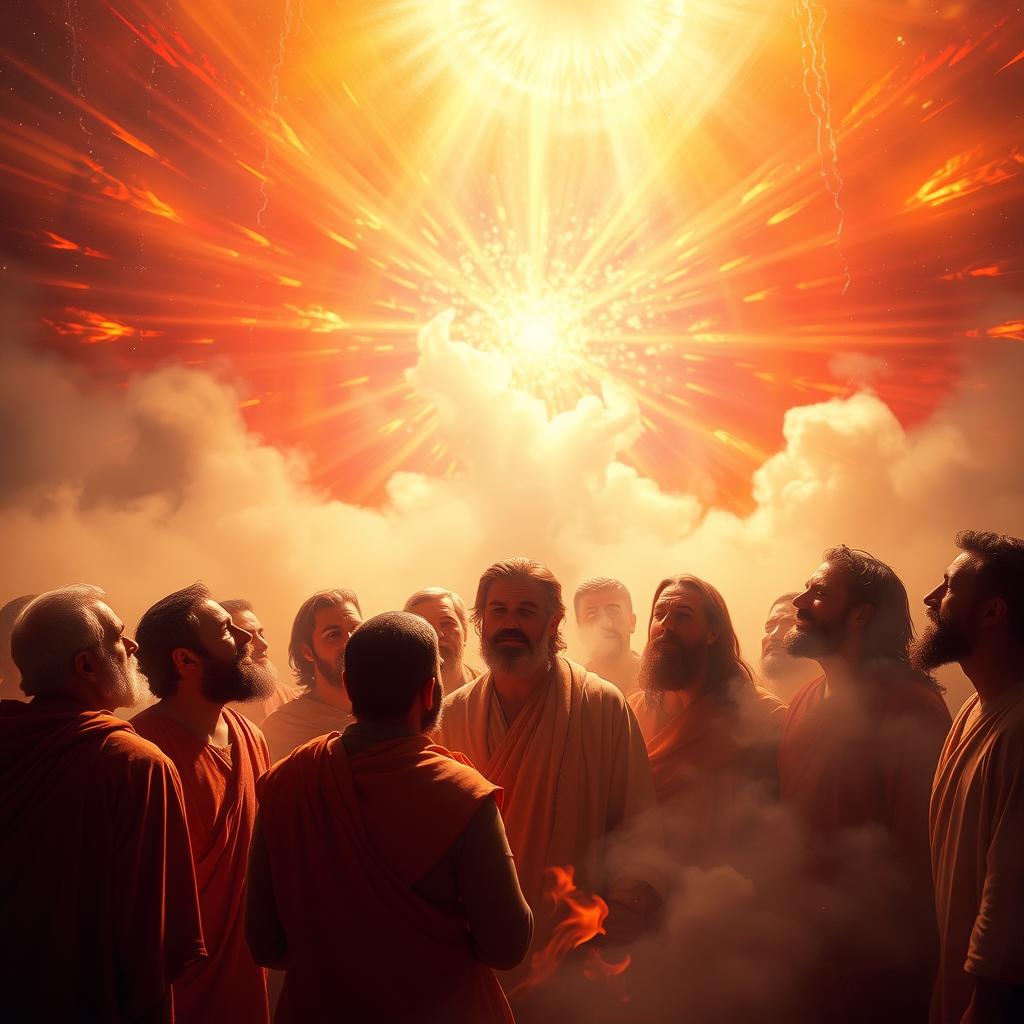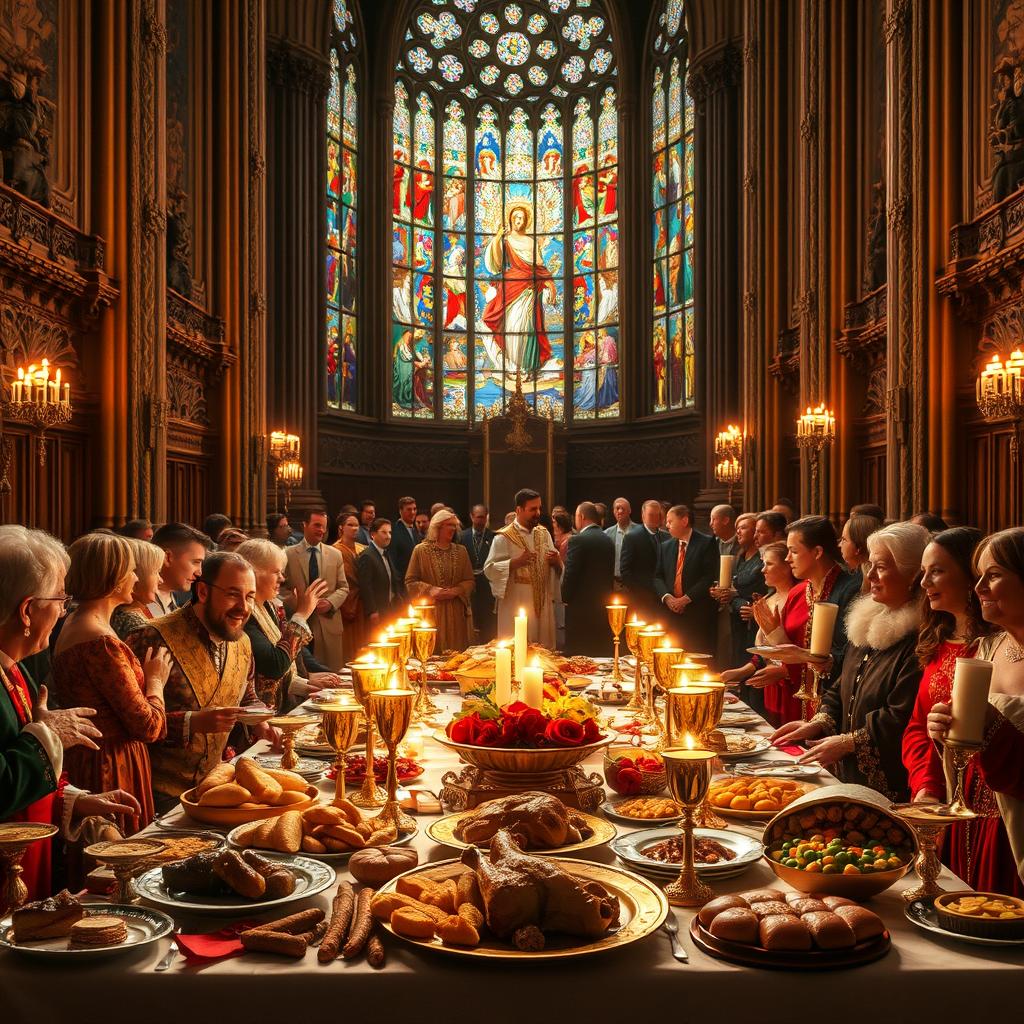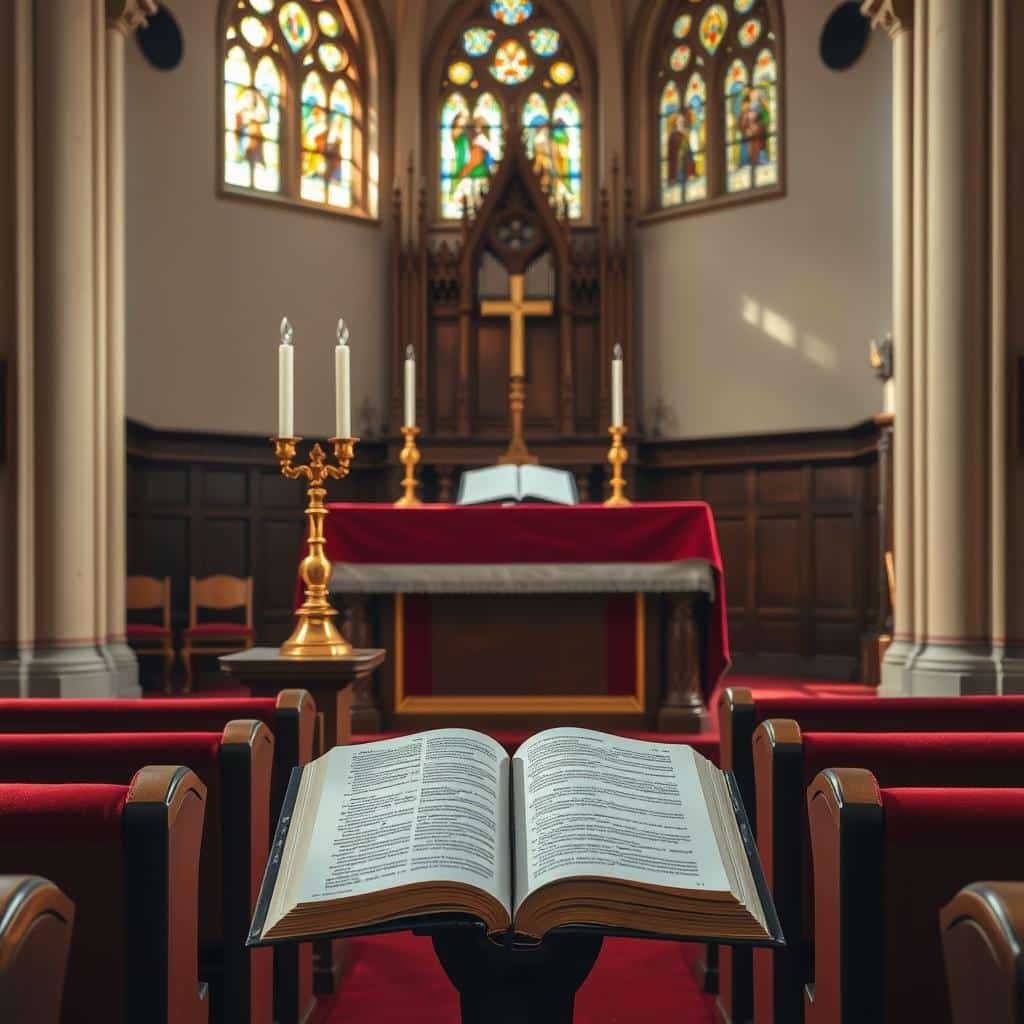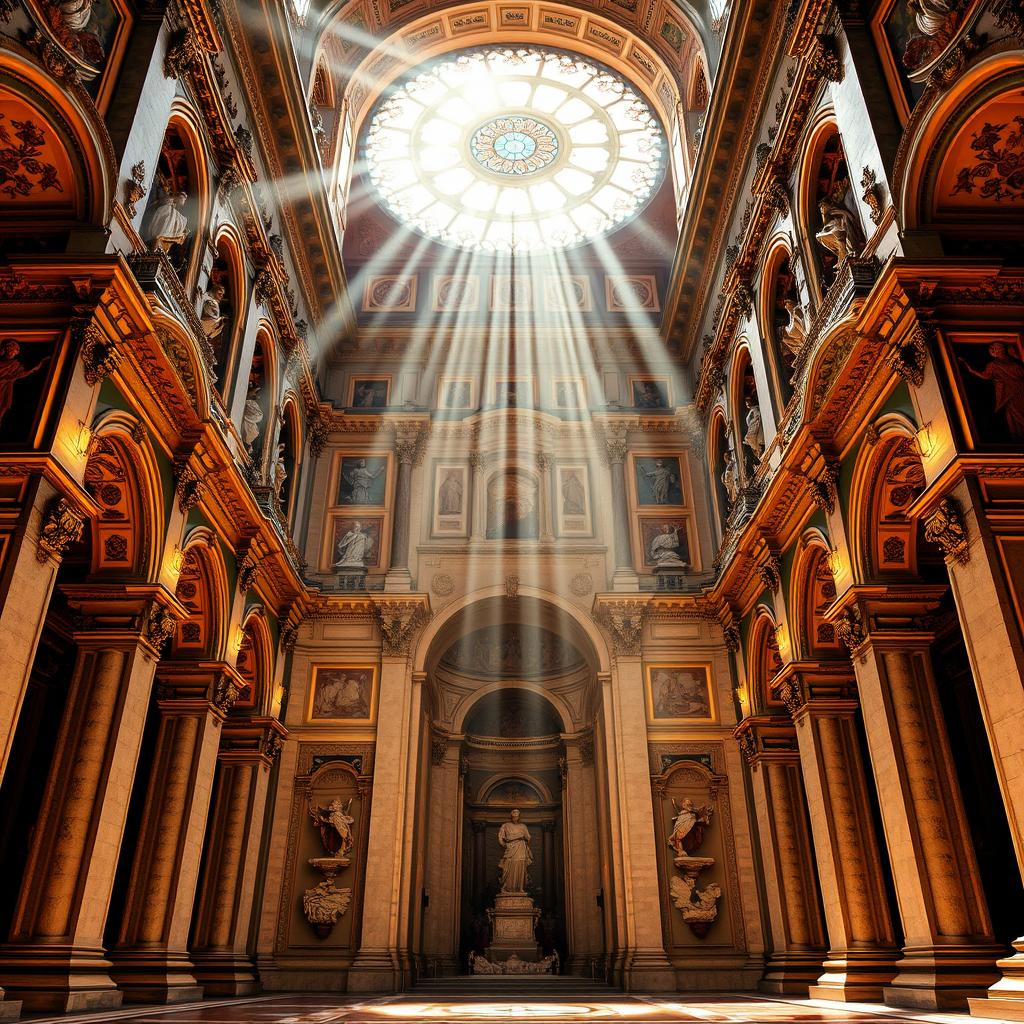The feast of Pentecost Sunday is a key moment in the Christian calendar. It celebrates the Holy Spirit’s descent on the disciples. This event started the Church’s mission, giving believers the power to share Christ’s teachings.
In Cycle C of the liturgical calendar, the readings for Pentecost Sunday give deep insights into the Holy Spirit. They show how the Spirit changes lives and the Church.
Reflecting on these readings, we see the Holy Spirit’s role in our faith. The Spirit guides and strengthens us to live our faith with courage.
The Sacred Fire: Understanding the Pentecost Miracle
Pentecost Sunday, Cycle C, is rooted in Jewish tradition. It’s known as the “Feast of Weeks” and marks the harvest season. This holiday is key to understanding the celebration.
The Historical Context of Pentecost in Judaism
Pentecost started as a harvest festival in ancient Jewish practices. It was a time to offer the first fruits to God. Later, it became linked to the giving of the Law on Mount Sinai, a major event in Jewish history.
From Harvest Festival to Sinai Covenant Celebration
Pentecost’s meaning changed from a harvest festival to a Sinai Covenant celebration. This change highlighted the Law’s role in Jewish life and worship.
| Aspect | Harvest Festival | Sinai Covenant Celebration |
|---|---|---|
| Purpose | Celebration of the harvest season | Commemoration of the giving of the Law |
| Significance | Expression of gratitude for the crops | Celebration of the covenant between God and Israel |
The early Christian Church saw Pentecost in a new light. It was the start of the Church’s mission to share Jesus’ teachings worldwide.
Pentecost is still a celebration of the Holy Spirit’s power and presence in Christian worship. Reflecting on the Pentecost miracle reminds us of the Holy Spirit’s ongoing role in the Church and the world.
Exploring Pentecost Sunday, Cycle C
Pentecost Sunday, Cycle C, is a special day filled with deep meaning. The readings for this cycle give us a fresh look at the Holy Spirit’s role. They show how the Spirit is involved in creation, making covenants, and building communities of believers.
Pentecost Sunday is a key moment in our liturgical calendar. It celebrates when the Holy Spirit came down on the disciples. In Cycle C, the readings help us see the Holy Spirit’s work in a new way.
The Liturgical Significance in Year C
The importance of Pentecost Sunday in Year C comes from the special readings. These readings focus on creation, covenant, and the Spirit’s life-giving power.
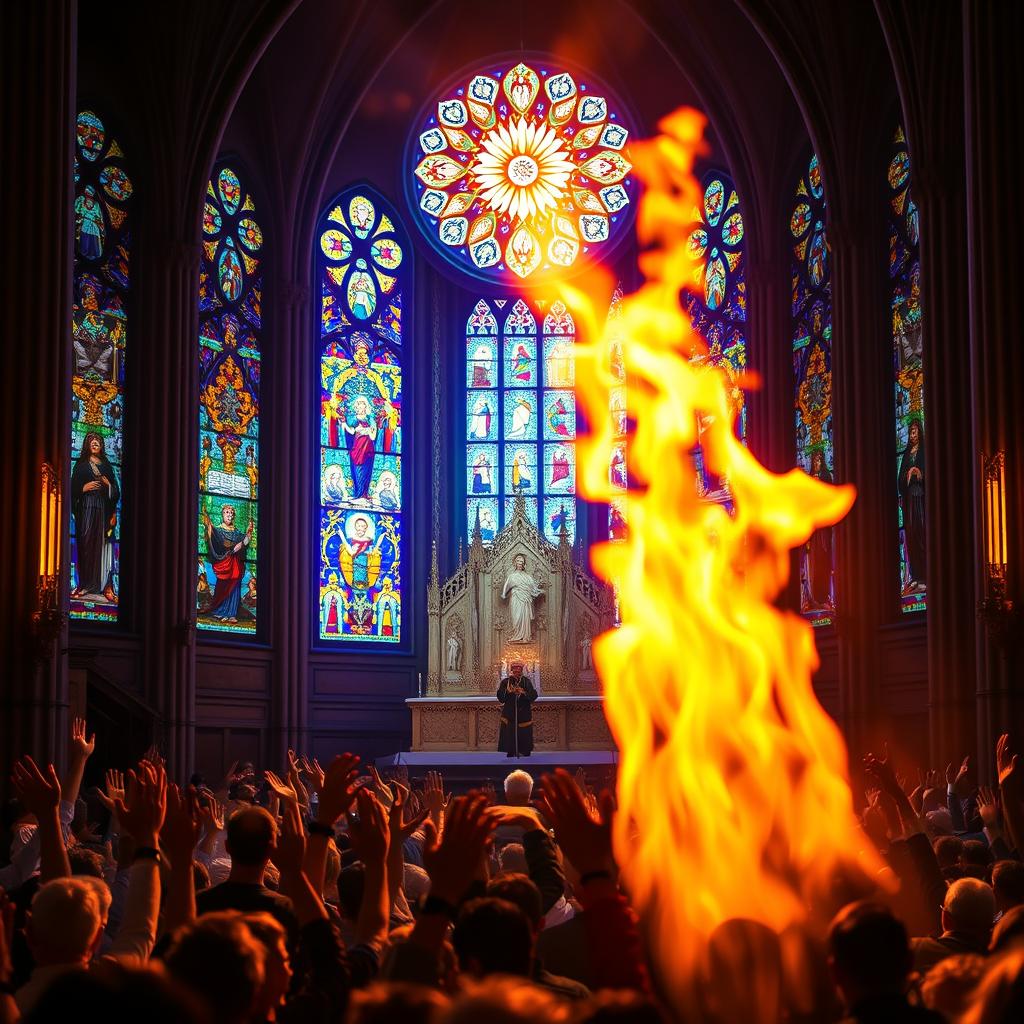
The Cycle C readings shed light on the Holy Spirit’s role. They show the Spirit’s presence in creation, the making of covenants, and the life of faith communities.
The Holy Spirit is seen as the breath of life. It brings creation to life and empowers believers. Through Cycle C, we learn more about the Spirit’s work in our lives and the world.
Reflecting on these readings helps us appreciate the Holy Spirit’s role in our faith. It also enriches our understanding of the Church’s life.
Babel and Pentecost: Genesis11:1-9
The story of Babel helps us understand Pentecost Sunday and the Holy Spirit’s gift. Genesis 11:1-9 tells us about humanity’s division, which was later undone at Pentecost.
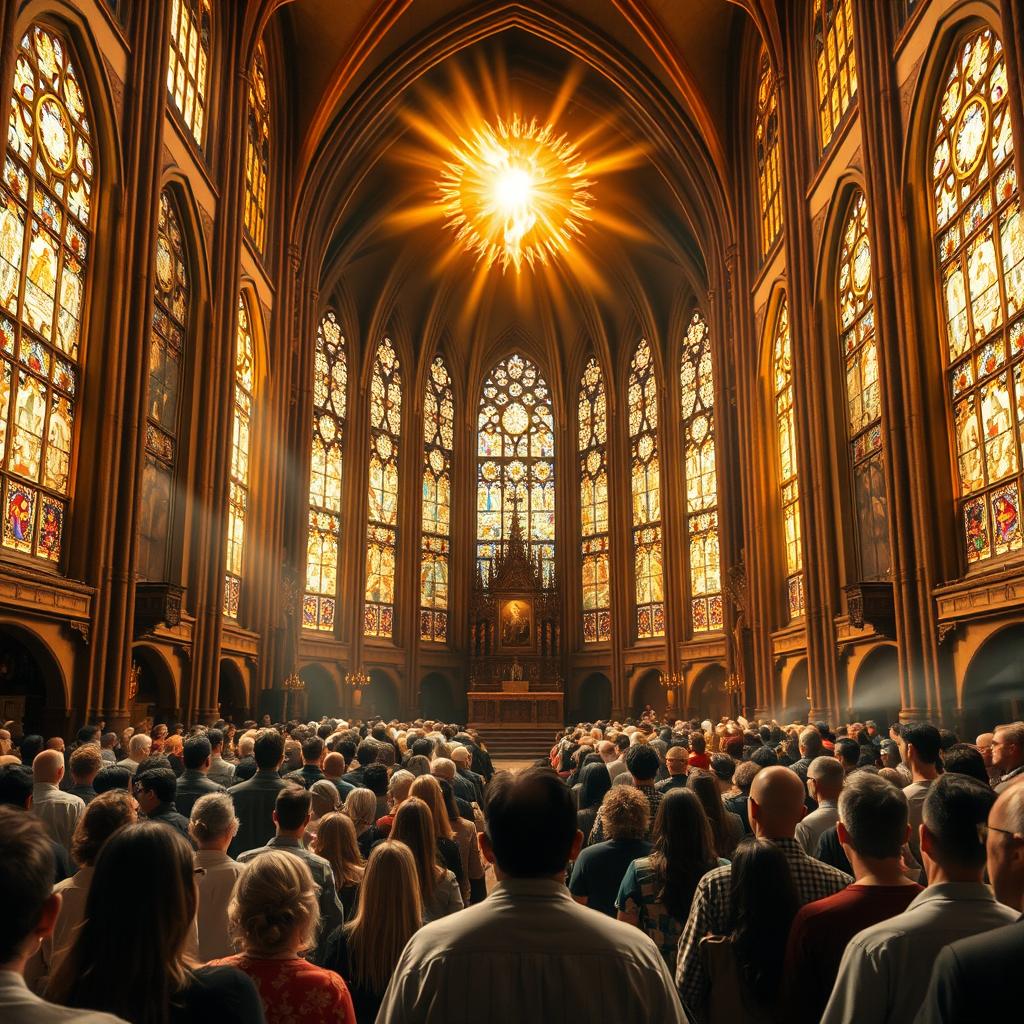
The Division of Languages at Babel
At Babel, people tried to build a tower to the heavens. God stopped them, causing languages to mix and people to spread out. This event showed the dangers of pride and the need for God’s guidance.
Pride, Confusion, and Scattered Humanity
The languages at Babel caused confusion and scattered people. This story contrasts with Pentecost’s unity and understanding, brought by the Holy Spirit.
| Event | Outcome | Significance |
|---|---|---|
| Babel | Division of languages and scattering | Consequences of pride and disobedience |
| Pentecost | Unity and understanding through the Holy Spirit | Reversal of Babel; gift of the Holy Spirit |
The story of Babel and Pentecost shows the Holy Spirit’s power. Babel was about division and pride, while Pentecost brought unity and understanding through the gospel and the Holy Spirit.
Thinking about Pentecost Sunday reminds us of the Holy Spirit’s role. It helps people from different backgrounds come together. The Pentecost event shows how the Holy Spirit can overcome Babel’s division, bringing unity and cooperation.
The Mountain of God: Exodus19:3-8a,16-20b
The story of God’s descent on Sinai in Exodus is filled with vivid images. These images hint at the Pentecost event. The scene is marked by fire, smoke, and a strong sense of God’s presence. These elements are also seen in the Pentecostal event of the Holy Spirit.
God’s Descent on Mount Sinai
God’s appearance on Mount Sinai is a powerful display of divine power. The mountain, covered in smoke and fire, shows God’s holy presence to the Israelites. This event is not just a show of God’s might but also a moment of making a covenant with the Israelites.

The fire and smoke from God’s descent on Sinai carry deep meaning. Fire often means God’s presence, purification, and guidance. The smoke, like a furnace or volcanic eruption, shows God’s awe-inspiring and fearful presence.
The divine presence on Mount Sinai foreshadows the Pentecost event. In Pentecost, the Holy Spirit comes down on the disciples in tongues of fire. This shows a link between the Old and New Testaments of God’s presence among His people.
In both stories, God’s presence is not just a show of power. It’s an invitation to a closer relationship with God. The Exodus and Pentecost share a common theme. God wants to live among His people, guiding and empowering them for their mission.
Reflecting on God’s descent on Mount Sinai and its link to Pentecost Sunday, Cycle C, reminds us of the Holy Spirit’s role in our lives. The images of fire and smoke remind us of God’s presence and action in the world. They inspire faith and devotion in believers.
Breath of Life: Ezekiel37:1-14
In Ezekiel 37:1-14, we see the Holy Spirit’s power to give life. This is a key idea for Pentecost Sunday. It shows a powerful vision of spiritual renewal and restoration.

The Prophet’s Vision of Resurrection
Ezekiel’s vision of dry bones is a strong metaphor. It shows the Holy Spirit’s power to bring life back. The dry bones stand for spiritual death, but their coming to life shows God’s power.
From Dry Bones to Living Army
The change from dry bones to a living army is a powerful symbol. It shows spiritual rebirth and renewal. This vision highlights the Holy Spirit’s role in making faith strong and believers alive.
| Element | Symbolism | Relation to Pentecost |
|---|---|---|
| Dry Bones | Spiritual Death | Pre-Pentecost State |
| Breath of Life | Holy Spirit’s Power | Pentecost’s Gift |
| Living Army | Revitalized Faith | Post-Pentecost Community |
Ezekiel’s vision has deep meaning for Pentecost Sunday. Just like the dry bones, believers are empowered and renewed by the Holy Spirit on Pentecost. This story makes us think about the Spirit’s life-giving power in our lives.
As we celebrate Pentecost, we remember the Holy Spirit’s power. This power is about renewal and spiritual rebirth, just like in Ezekiel’s vision.
Prophetic Promise: Joel3:1-5
On Pentecost Sunday in Cycle C, we remember Joel’s words. They hint at this important moment. Joel 3:1-5 is key to understanding Pentecost’s significance. It talks about the Spirit being poured out on everyone, a central theme for Pentecost.

The Universal Outpouring of the Spirit
Joel predicted a time when the Spirit would be given to all. This change shows God’s presence in a new way. It means everyone, no matter their age, gender, or status, can receive the Spirit.
This message of God’s love for all is powerful. On Pentecost Sunday, Cycle C, we think about how this changes our view of community and worship.
Dreams, Visions, and Prophecy for All
Joel said the Spirit’s coming would bring dreams, visions, and prophecy to people. This gift is for everyone, not just leaders. It shows that every Christian is called to share God’s message.
For Pentecost Sunday, Cycle C, we’re urged to explore this prophetic side of faith. We seek to understand how the Spirit guides us through dreams and visions. This deepens our faith and makes our worship richer.
As we celebrate Pentecost, we see the Spirit’s outpouring as a fulfillment of Joel’s prophecy. It opens a new chapter in our salvation story. This event fires up our faith, urging us to live out Pentecost’s promise every day.
Creation’s Song: Psalm104:1-2,24,35,27-28,29,30
The Psalmist’s hymn in Psalm 104 beautifully shows God’s creative and sustaining power. It deeply connects with Pentecost’s themes. This Psalm celebrates God’s creation and ongoing work, mirroring the Holy Spirit’s role on Pentecost Sunday.
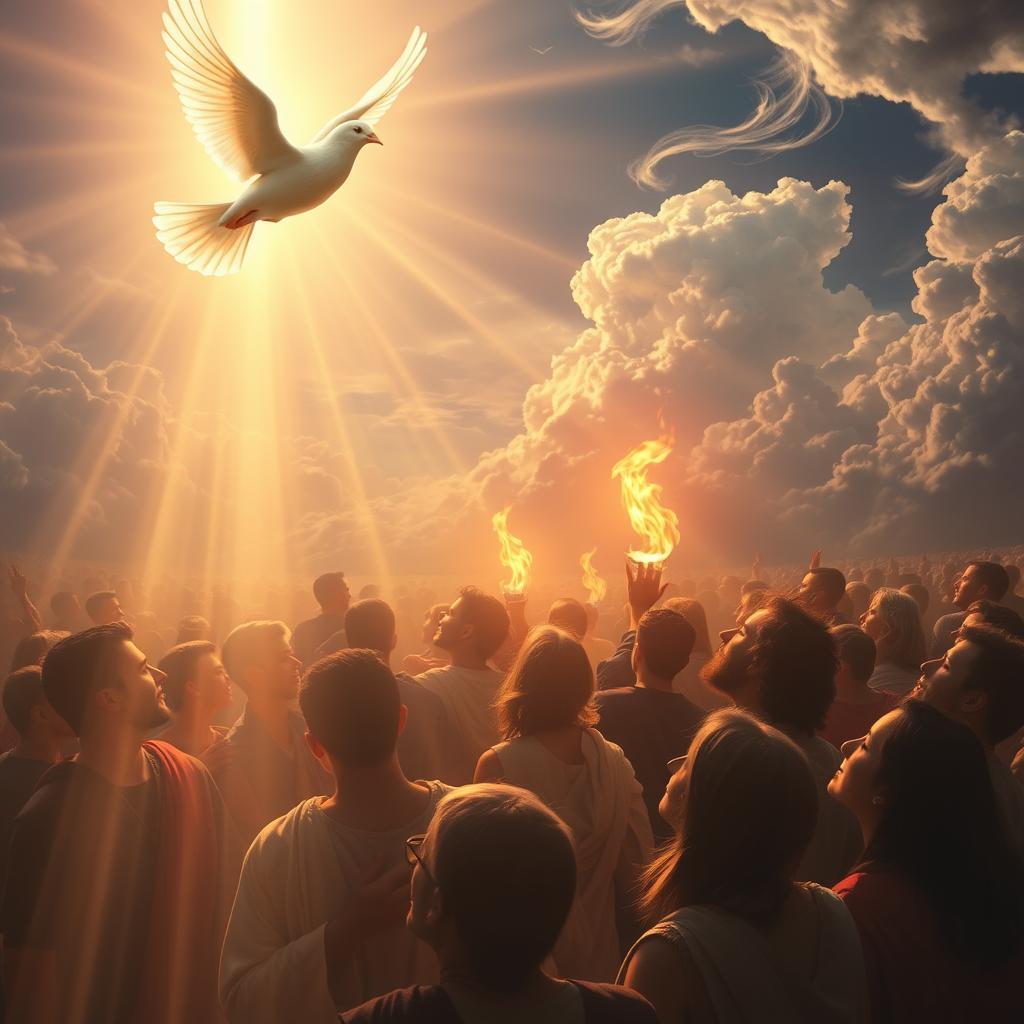
The Spirit as Creator and Sustainer
Psalm 104 vividly describes God as the universe’s creator and sustainer. The Psalmist says God “covers yourself with light as with a garment” (Psalm 104:2), showing God’s creative might. It also talks about God’s ongoing care for creation, noting that “these all wait for you to give them their food in due season” (Psalm 104:27-28).
Breath, Wind, and Renewal Imagery
The imagery in Psalm 104 is rich with themes that echo the Holy Spirit’s role. The Psalmist writes, “you take away their breath, they die and return to their dust” (Psalm 104:29), and “you send forth your spirit, they are created; and you renew the face of the ground” (Psalm 104:30). This breath, wind, and renewal imagery is like the Holy Spirit’s life-giving and renewing presence, especially on Pentecost Sunday.
| Imagery | Psalm 104 Reference | Pentecost Connection |
|---|---|---|
| Breath/Wind | Psalm 104:29-30 | Holy Spirit’s life-giving presence |
| Creation | Psalm 104:30 | New creation through the Spirit |
| Renewal | Psalm 104:30 | Renewal of hearts and lives |
Reflecting on Psalm 104 during Pentecost Sunday reminds us of the Holy Spirit’s role in creation and our lives. The Psalm’s themes of creation, sustenance, and renewal through God’s Spirit connect deeply with Pentecost’s gospel. It highlights the “holy spirit pentecost sunday” as a celebration of God’s ongoing work in the world.
Groaning for Redemption: Romans8:22-27
In Romans 8, Paul shows us the Holy Spirit’s role in renewing creation. This echoes the themes of Pentecost.
The passage from Romans 8:22-27 reminds us of the Holy Spirit’s role in our lives. It speaks to the heart of creation’s longing for redemption. This theme is especially relevant on Pentecost Sunday, Cycle C.
Creation’s Labor Pains
Paul writes that “the creation waits in eager expectation for the children of God to be revealed” (Romans 8:19). This is not just waiting; it’s an active groaning. It shows the birth of something new. The Spirit helps believers in their weakness.
The redemption is not just for humans but for all creation. This shows how connected our world is. The Holy Spirit’s work affects us all.
Cosmic Dimensions of Spiritual Renewal
The Spirit’s role in renewal is complex. It transforms believers and restores the cosmos. This view of redemption highlights the importance of Pentecost. It was when the Holy Spirit was poured out on all people, starting a new era.
| Aspect of Renewal | Description |
|---|---|
| Believers’ Transformation | The Holy Spirit empowers believers for service and witness, transforming them into the image of Christ. |
| Cosmic Restoration | The Spirit’s work extends to the renewal of all creation, signaling a future where God is all in all. |
| Intercession | The Spirit intercedes on behalf of believers, aiding them in their weakness and groaning for redemption. |
As we celebrate Pentecost Sunday, Cycle C, we see the vast scope of God’s redemption. The Holy Spirit’s help gives us hope and strength. It encourages us to live our faith with the Spirit’s power.

This cosmic view in Romans 8 challenges us to see our faith in a bigger context. It invites us to join the Spirit’s work. We groan with creation, waiting for the full revelation of God’s children.
Rivers of Living Water: John7:37-39
On the last day of the Feast of Tabernacles, Jesus stood and cried out, inviting all to come to him for living water. This moment is key to understanding Pentecost Sunday and the Holy Spirit’s gift.
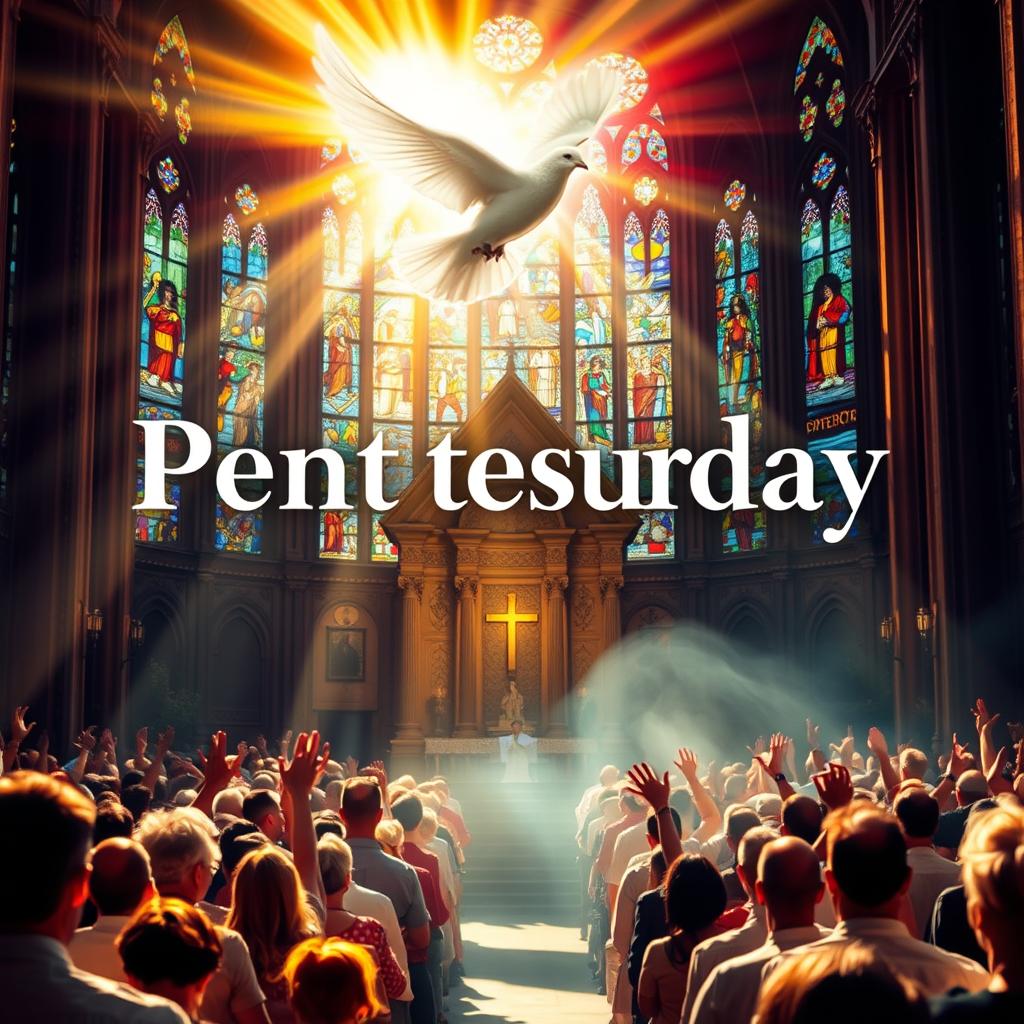
Jesus made this call on the final day of a celebration rooted in Jewish tradition. Water was a big symbol here. It reminded everyone of God’s care during the Israelites’ wilderness journey.
Jesus’s Invitation at the Feast of Tabernacles
The Feast of Tabernacles was a time of joy and thanks for the harvest. Every day, a water ceremony was held. It showed the nation’s need for God’s help.
By saying “living water,” Jesus meant something spiritual, not just water. This idea ties Jesus’s call to the Holy Spirit, a key part of Pentecost Sunday.
The Symbolism of Water in Jewish Tradition
In Jewish tradition, water meant life, purity, and God’s favor. Jesus’s words would have meant a lot to his listeners. They pointed to a new spiritual life and renewal.
The Holy Spirit’s gift on Pentecost Sunday was Jesus’s promise come true. Believers got a new life, filled with the Spirit’s fruits and power. This was the living water Jesus spoke of.
The link between Jesus’s call at the Feast of Tabernacles and Pentecost Sunday is deep. Both highlight the Holy Spirit’s power to change lives. This makes pentecost sunday readings a time of spiritual awakening and renewal.
Thinking about Jesus’s call and the Holy Spirit’s outpouring on Pentecost reminds us of God’s ongoing work in our lives. The holy spirit pentecost sunday shows God’s presence and action among us.
The Seven Gifts of the Holy Spirit
Pentecost Sunday is a time to celebrate the Holy Spirit, the third person of the Trinity. The Holy Spirit is not just a distant figure. It’s a living, active presence in our lives, guiding and empowering us to live our faith.
The seven gifts of the Holy Spirit are key to Christian spirituality. They help us live a deeper life in the Spirit.
Wisdom and Understanding
The gifts of wisdom and understanding are vital for life’s complexities. Wisdom lets us see the world from God’s view. Understanding helps us grasp faith’s mysteries. Together, they help us see God’s presence in our daily lives.
Discerning God’s Presence in Daily Life
Seeing God’s presence in our lives needs wisdom and understanding. It’s about noticing God’s work in the world and our lives. By growing these gifts, we become more in tune with God’s will. This lets us live more truly as followers of Christ.

The seven gifts of the Holy Spirit are crucial for a strong faith. Reflecting on these gifts reminds us of the Holy Spirit’s role in our lives. It empowers us to live our faith with courage and conviction.
Fruits of the Spirit in a Divided World
In a world filled with division, the fruits of the Spirit offer a powerful message. As we think about Pentecost Sunday, Cycle C, we remember the Holy Spirit brings love, joy, peace, and patience. These qualities can help us come together.

Love, Joy, Peace, and Patience
The Apostle Paul’s letter to the Galatians talks about the fruits of the Spirit. Love, joy, peace, and patience show the Spirit’s work in us. On Pentecost Sunday, we’re called to think about how these qualities can change our relationships and communities.
Countering Cultural Chaos with Spiritual Fruit
Our culture often values individualism and competition. But the fruits of the Spirit offer a different path. Jesus said, “Rivers of living water” flow from those who believe in Him (John 7:38). This living water is the Holy Spirit, who helps us live with love, joy, peace, and patience.
By showing these qualities, we become lights of hope in a divided world. The Pentecost Sunday gospel reading tells us the Spirit’s power is for personal and community change. Living the fruits of the Spirit can unite people, creating a sense of unity and purpose.
Pentecost Traditions Across Christian Communities
Pentecost Sunday, Cycle C, reminds us of the unity among Christians worldwide. This feast is celebrated with great enthusiasm in many Christian groups. Each group has its own special ways of celebrating.
Eastern Orthodox Celebrations
The Eastern Orthodox Church focuses a lot on the liturgy of Pentecost. The celebration is filled with colorful decorations and serious prayers.
Green Branches and Kneeling Prayers
Eastern Orthodox churches use green branches to symbolize the Holy Spirit’s power. The people also kneel in prayer, showing their humility and respect.
| Tradition | Description |
|---|---|
| Eastern Orthodox | Characterized by vibrant decorations, solemn liturgies, and the use of green branches. |
| Roman Catholic | Emphasizes the role of the Holy Spirit in the Church, often with special masses and devotions. |
| Protestant | May include special services, hymns, and sermons focusing on the Holy Spirit’s work. |
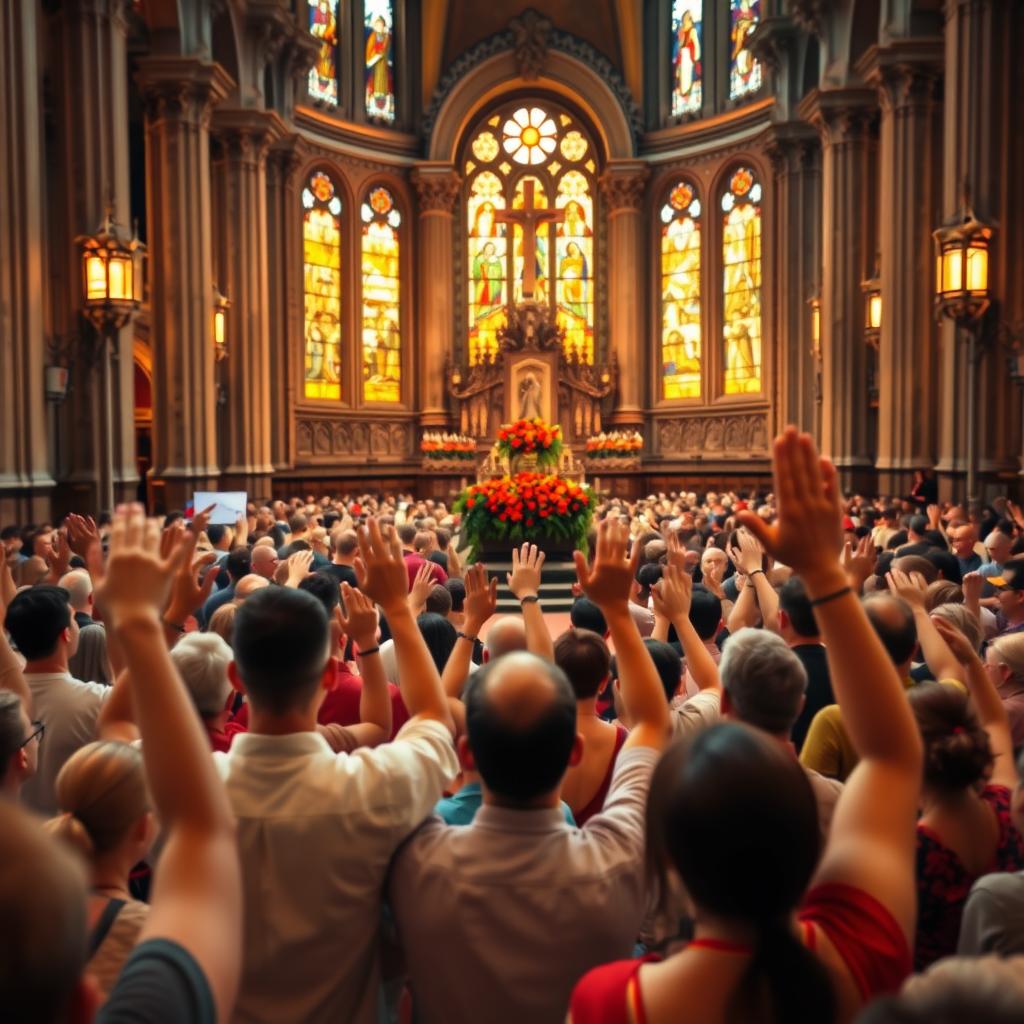
These different traditions make Pentecost even more special. As we think about the pentecost homily cycle c and cycle c pentecost sunday, we remember the hope and new beginnings Pentecost brings.
Inviting the Holy Spirit into Your Daily Life
On Pentecost Sunday, we’re called to renew our awareness of the Holy Spirit’s active presence in our world and within us. This feast is not just a celebration of the past but an invitation to experience the Holy Spirit’s power in our present.
As we reflect on Pentecost Sunday, Cycle C, we are reminded of the rich liturgical significance and the readings that guide us toward a deeper understanding of the Holy Spirit’s role in our lives.
Prayer Practices for Spiritual Awakening
To invite the Holy Spirit into our daily lives, we can adopt various prayer practices that foster spiritual awakening. One such practice is the use of breath prayers, short prayers that can be recited with each breath, helping to maintain a constant awareness of God’s presence.
Breath Prayers and Invocations
Breath prayers can be simple and powerful, such as “Come, Holy Spirit, renew me” or “Spirit of God, guide me.” These prayers, repeated throughout the day, can help center our thoughts on our faith and invite the Holy Spirit’s guidance.
| Prayer Practice | Description | Benefit |
|---|---|---|
| Breath Prayers | Short prayers recited with each breath | Maintains awareness of God’s presence |
| Invocations | Prayers calling upon the Holy Spirit | Invites guidance and renewal |
By incorporating these prayer practices into our daily routine, we can deepen our connection with the Holy Spirit and experience the transformative power of Pentecost in our lives.

From Upper Room to Open Roads: Living Pentecost Today
The Pentecost event is a key moment in Christian history. It empowers believers to live their faith in many ways. Reflecting on Pentecost Sunday, Cycle C, reminds us of the Church’s mission.
The Holy Spirit’s outpouring on the disciples in the Upper Room changed their lives. It allowed them to share Jesus’ message with people from different cultures and languages. This miracle still inspires and guides Christians today.
In Cycle C Pentecost Sunday, the readings and celebrations encourage us to renew our commitment. We are called to be open to the Spirit’s work in our lives. This means embracing the diversity and complexity of the world.
By embracing the Spirit’s power, we can become a vibrant and inclusive community. We reflect the love and compassion of Christ to all people. As we move from the Upper Room to the open roads, may we live our faith with courage, hope, and joy.
